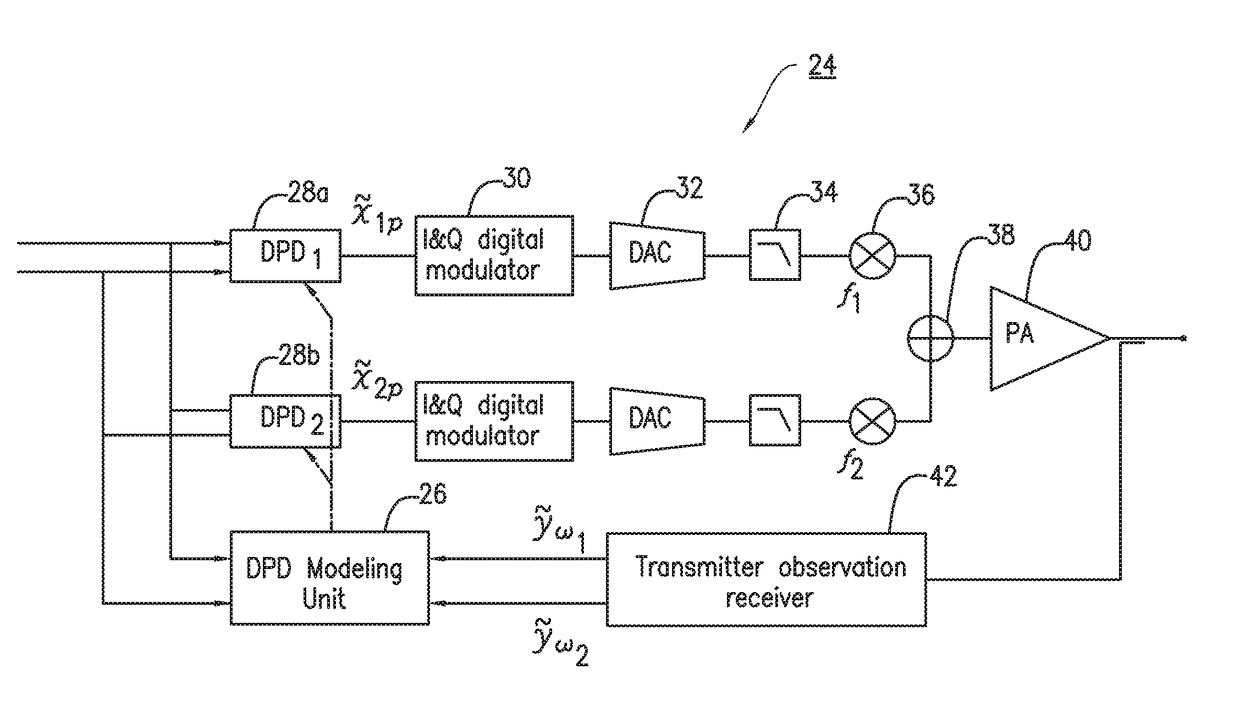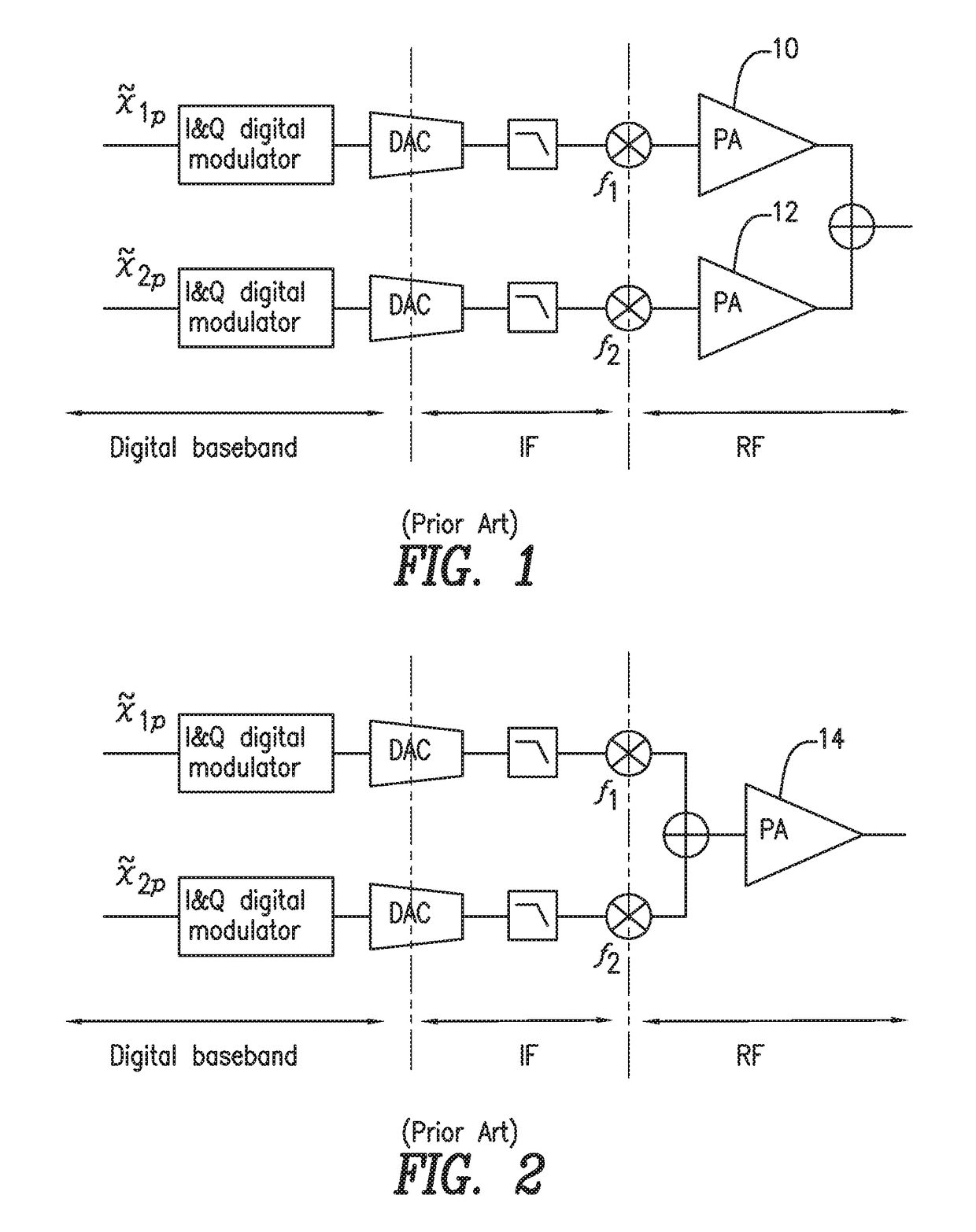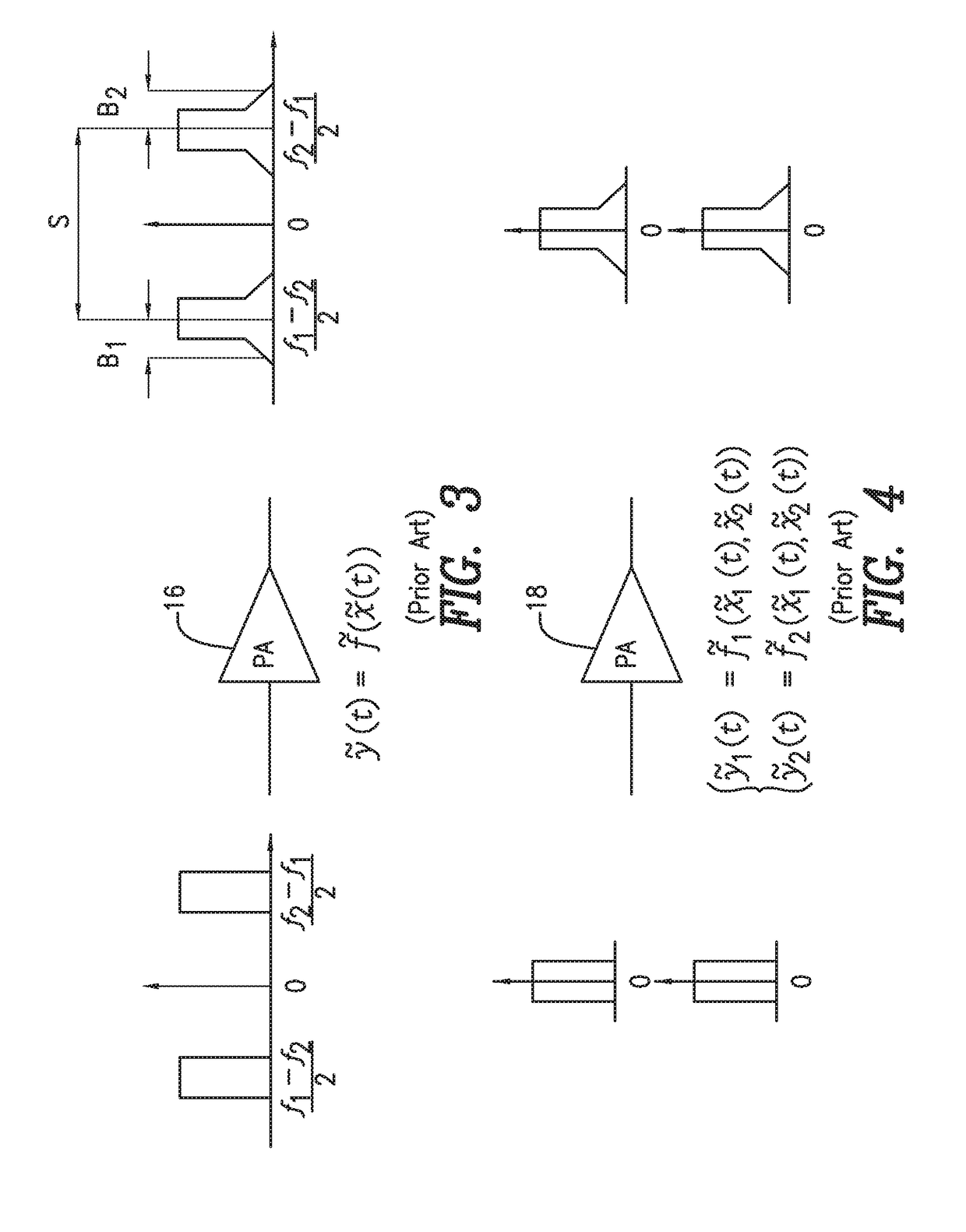Baseband equivalent volterra series for digital predistortion in multi-band power amplifiers
a multi-band power amplifier and baseband equivalent technology, applied in the field of amplifiers and transmitters, can solve the problems of limiting network flexibility, increasing the complexity of radio transceivers, and dramatically increasing the deployment cost of the network
- Summary
- Abstract
- Description
- Claims
- Application Information
AI Technical Summary
Benefits of technology
Problems solved by technology
Method used
Image
Examples
case 1
[0092]To assess the performance of the model described above, the formulation was used to model and linearize a high power dual-band RF PA. The device under test was a broadband 45 W single ended GaN PA driven with a dual-band multi-standard signal. Three test scenarios are defined:[0093] 20MHz (1001) WCDMA and 20 MHz LTE signals centered @2.1 GHz and 2.2 GHz respectively. The PAPR of the dual-band signal is equal to 10.3 dB.[0094]Case 2: 20 MHz (1001) WCDMA and 20 MHz LTE signals centered @2.1 GHz and 2.4 GHz, respectively. The PAPR of the dual-band signal is equal to 10.3 dB.[0095]Case 3: 20 MHz 4 C WCDMA and 20 MHz LTE signals centered @2.1 GHz and 2.8 GHz respectively. The PAPR of the dual-band signal is equal to 10.1 dB.
[0096]The proposed dual-band BBE Volterra and 2D-DPD models were each used to linearize a DUT PA. The training of the two models was conducted using samples of the PA output signals in each band sampled at 100MSPS. The nonlinearity order and memory depth of each...
PUM
 Login to View More
Login to View More Abstract
Description
Claims
Application Information
 Login to View More
Login to View More - R&D
- Intellectual Property
- Life Sciences
- Materials
- Tech Scout
- Unparalleled Data Quality
- Higher Quality Content
- 60% Fewer Hallucinations
Browse by: Latest US Patents, China's latest patents, Technical Efficacy Thesaurus, Application Domain, Technology Topic, Popular Technical Reports.
© 2025 PatSnap. All rights reserved.Legal|Privacy policy|Modern Slavery Act Transparency Statement|Sitemap|About US| Contact US: help@patsnap.com



